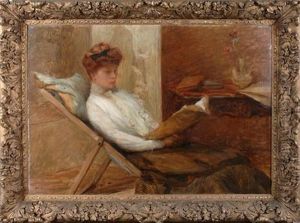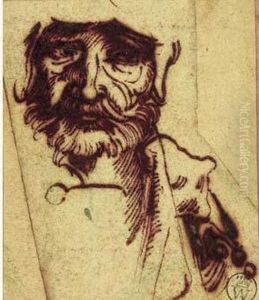Pierre Paul Cavaille Paintings
Pierre Paul Cavaille was a French artist born on January 26, 1814, in Toulouse, France. Not as widely recognized as some of his contemporaries, Cavaille was nonetheless a skilled painter who contributed to the 19th-century French art scene, primarily focusing on the genre of still life. His work is characterized by its meticulous attention to detail and its vibrant, precise depiction of flowers and fruits, a subject matter that was very popular during his time.
Cavaille developed his artistic skills at a young age and was influenced by the works of the Old Masters as well as by the Neoclassical and Romantic movements that preceded his career. He studied at the Toulouse School of Fine Arts and later moved to Paris to further his education and career. In Paris, he became a student of the acclaimed painter François-Édouard Picot, who was known for his classical subjects and style. Under Picot's guidance, Cavaille honed his technique and embraced a more traditional approach to painting.
Throughout his career, Cavaille exhibited his work at the Paris Salon, the official art exhibition of the Académie des Beaux-Arts in Paris. His paintings were well-received, and he gained a respectable reputation among art collectors and critics of the time. Despite the rise of new art movements such as Impressionism during his lifetime, Cavaille remained committed to his more classical and realistic style.
Cavaille's still lifes are particularly notable for their realism and the artist's ability to capture the texture and translucency of diverse materials, from the delicate petals of flowers to the smooth surfaces of fruits. He had a talent for playing with light and shadow, adding a sense of depth and volume to his compositions. His color palette was rich and varied, often highlighting the natural beauty and diversity of the flora he chose to depict.
Pierre Paul Cavaille's works can be found in various private collections and have been displayed in museums, although he does not have the same level of fame as some of his contemporaries. He continued to paint until his death on October 28, 1886, in Paris, leaving behind a body of work that, while not revolutionary in its time, represents a skilled and dedicated practice within the traditional genre of still life painting.

